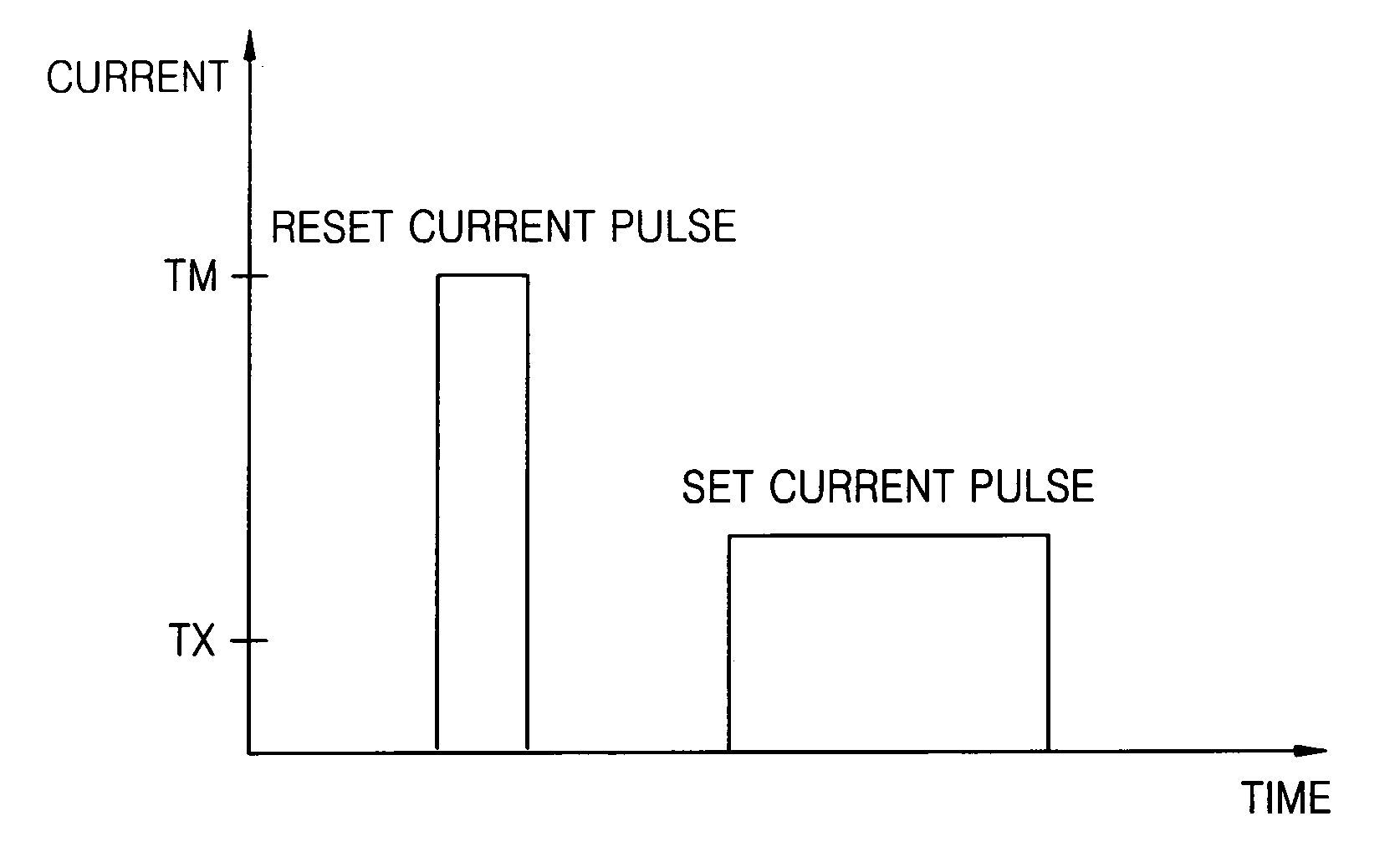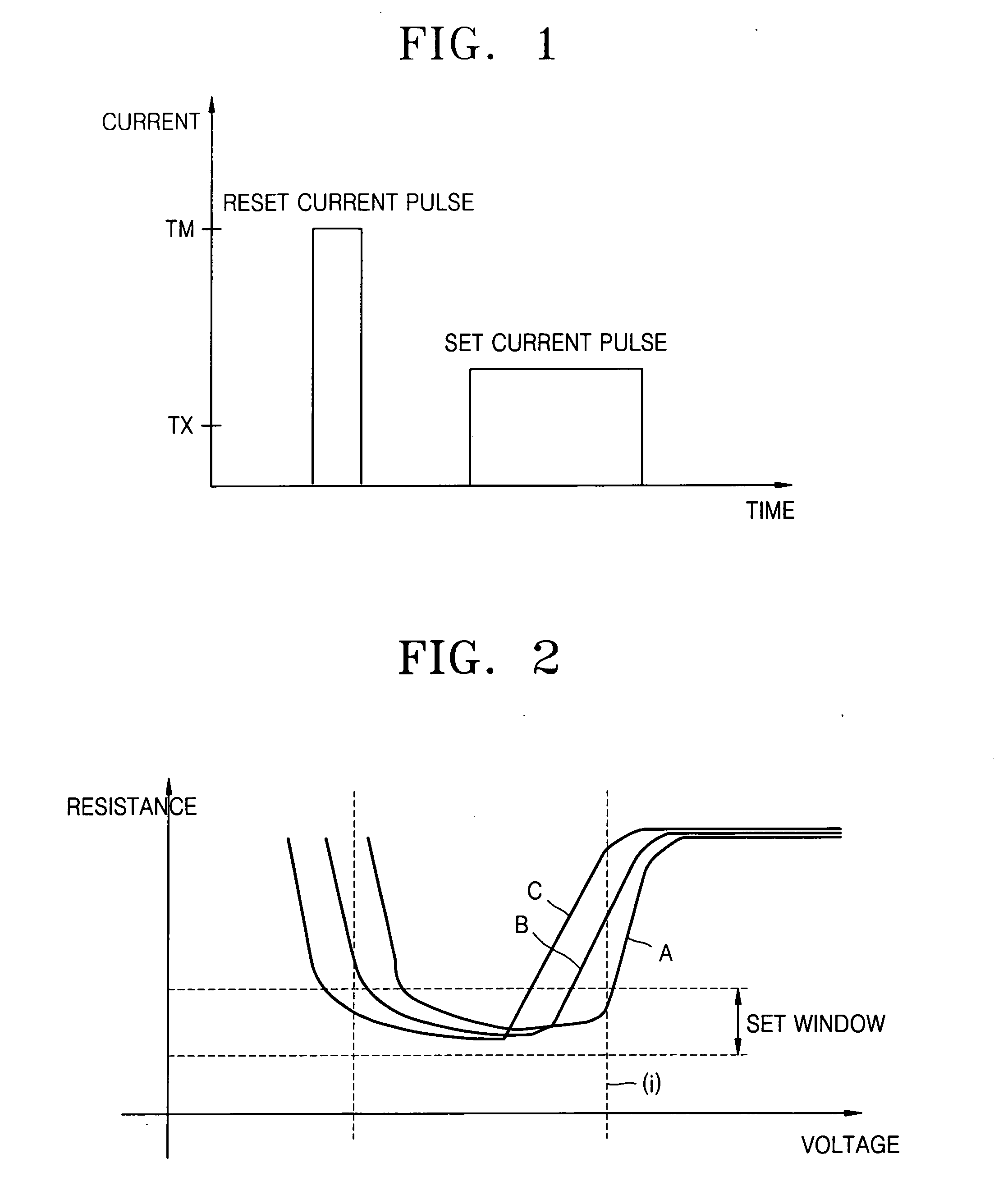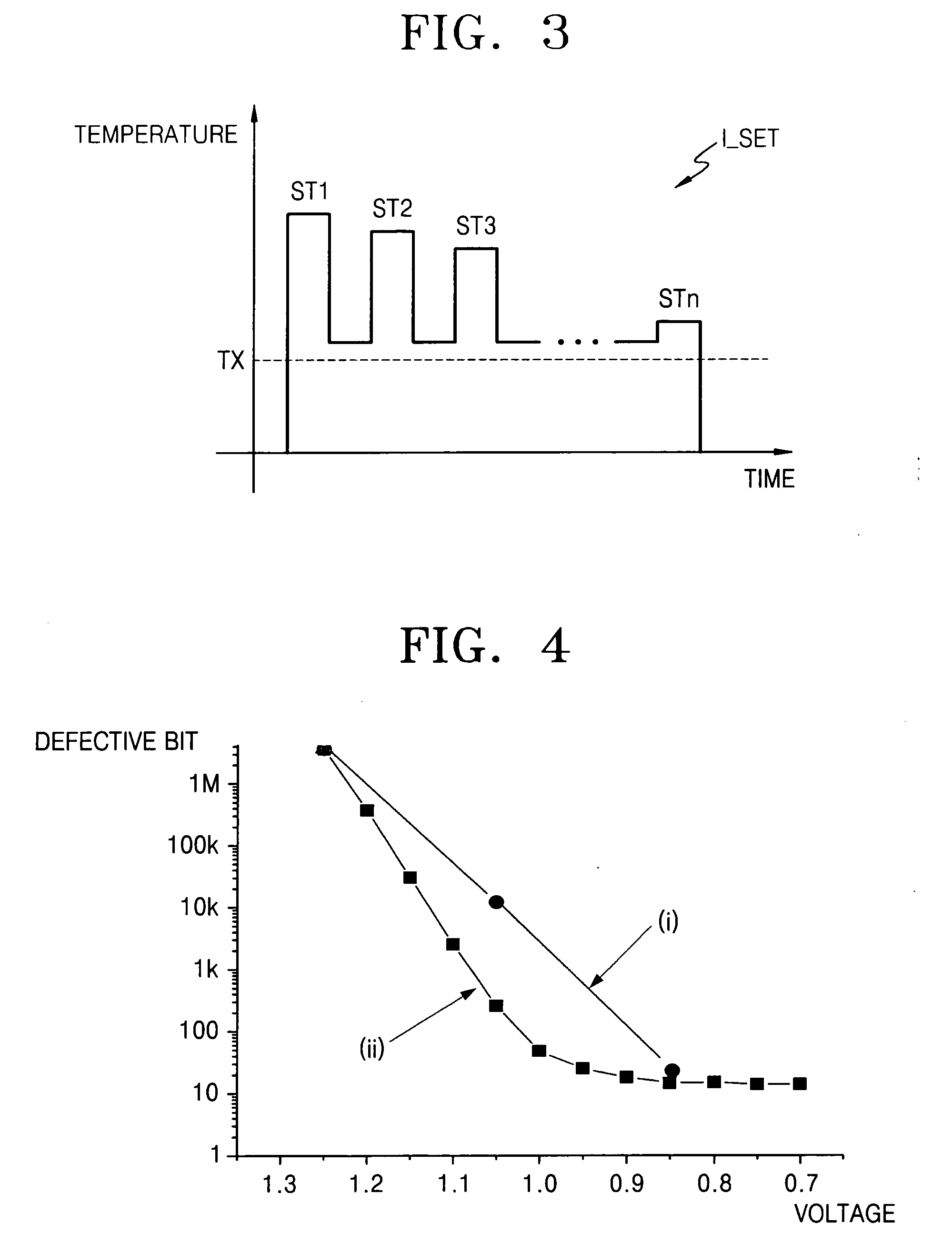Method for programming phase-change memory array to set state and circuit of a phase-change memory device
- Summary
- Abstract
- Description
- Claims
- Application Information
AI Technical Summary
Benefits of technology
Problems solved by technology
Method used
Image
Examples
Embodiment Construction
[0026]FIG. 3 is a graph illustrating a set current pulse applied to a phase-change memory array according to an exemplary embodiment of the present invention. In general, in order to program a phase-change memory array to a set state, a set current pulse may be applied to phase-change memory cells of the array. In an example, the set current pulse, I_SET, may include first through nth stages, ST1 through STn. In any given stage, the minimum current level may remain greater than a reference current value. The current level of the set current pulse I_SET may be reduced sequentially from stage to stage as it is applied to the phase-change memory cells of the array. The currents of the set current pulse l_SET may vary from memory cell to memory cell and / or among the memory cells of the phase-change memory array, but the current level of the set current pulse in the first stage ST1 is at the highest current that would cause a given phase-change cell in the memory array to transit to a se...
PUM
 Login to View More
Login to View More Abstract
Description
Claims
Application Information
 Login to View More
Login to View More - R&D
- Intellectual Property
- Life Sciences
- Materials
- Tech Scout
- Unparalleled Data Quality
- Higher Quality Content
- 60% Fewer Hallucinations
Browse by: Latest US Patents, China's latest patents, Technical Efficacy Thesaurus, Application Domain, Technology Topic, Popular Technical Reports.
© 2025 PatSnap. All rights reserved.Legal|Privacy policy|Modern Slavery Act Transparency Statement|Sitemap|About US| Contact US: help@patsnap.com



